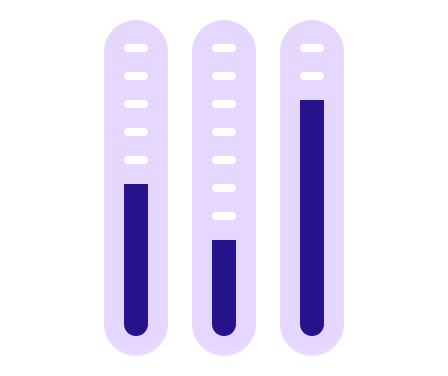Multiple Condition Coverage (MCC)
MCC Metric Definition
In the MCC coverage metric, all statements must be executed and all combinations of truth values in each decision must occur at least once to reach full coverage. The coverage of a program is the number of executed statement blocks and condition combinations divided by their total number in the program.

Example
A C/C++ function with a decision based on a composed set of conditions nicely shows the difference between MCC and plain Condition Coverage:
bool isValidPosition(int x, int y, int z)
{
if ((x > 10 || y > 20) && z > 0)
return true;
else
return false;
}
For 100% MCC all combinations of truth values for the tree boolean expressions x > 10, y > 20 and z > 0 need to be exercised. One might expect 23 = 8 tests to be needed. Languages like C, C++, C# and JavaScript perform a so called short-circuit evaluation: If x > 10 evaluates to TRUE the expression y > 20 won’t be evaluated anymore. Likewise, if neither x > 10 nor y > 20 is TRUE z > 0 won’t be valuated anymore as it cannot change the decision anymore.
As a result the number of possible combinations and number of needed tests for 100% Multiple Condition Coverage is reduced to these five:
| x > 10 | y > 20 | z > 0 |
|---|---|---|
| FALSE | TRUE | TRUE |
| TRUE | TRUE | |
| FALSE | TRUE | FALSE |
| TRUE | FALSE | |
| FALSE | FALSE |
Drawbacks
The number of possible combinations can ‘explode’ in light of big numbers of conditions. To mitigate this problem the Modified Condition/Decision Coverage metric was created.
Alternate Name
Multiple Condition Coverage is also known as Multicondition Coverage and Condition Combination Coverage.
Relation to Other Metrics
100% Multiple Condition Coverage implies 100% Modified Condition/Decision Coverage, 100% Condition Coverage and so forth.
Unlike Condition Coverage
a) all possible combinations and
b) the decision outcomes
are considered.
Relevance of MCC for Safety Standard EN 50128
EN 50128 recommends MCC (or Modified Condition/Decision Coverage) for SIL 1 and 2. For SIL 3 and 4 this level is even highly recommended.